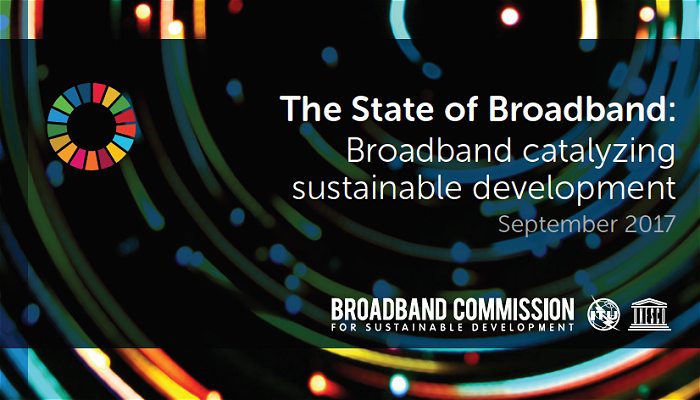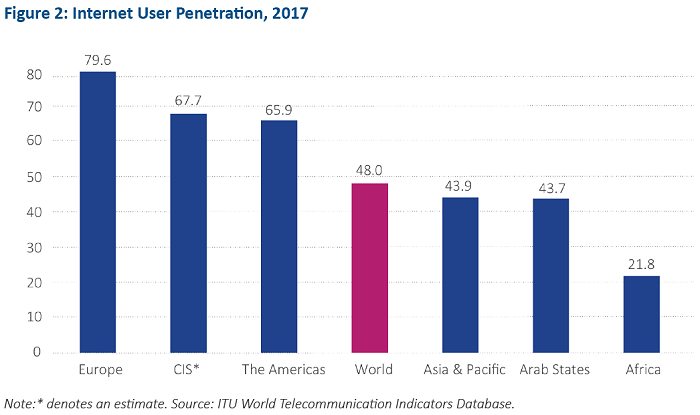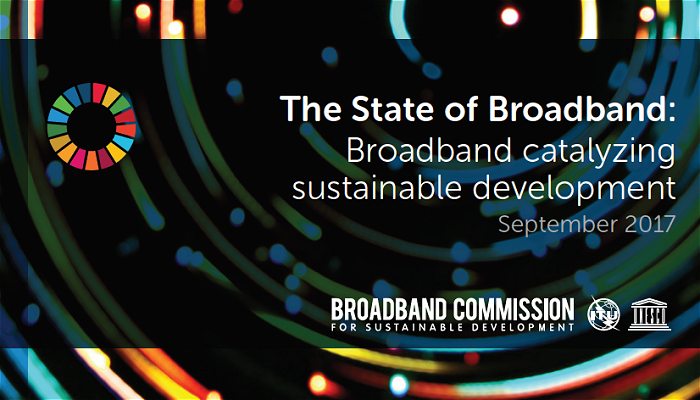Approximately 3.58 billion people are expected to be connected to the web by the end of this year. It's an impressive figure, but 52% of the global population still won't have access to an internet connection.

According to the recently published State of Broadband 2017 report, the 3.58 billion figure will represent a year-on-year increase of some 180 million people.
Mobile broadband subscriptions will continue to outpace fixed broadband subscribers. and by more than a factor of four - an estimated 4.22 billion vs. 979 million. Bear in mind a fixed broadband subscriber may also have one or more mobile subscriptions.
With regard to Australia specifically, the report notes there were 30 fixed-line broadband subscriptions per 100 Australians and 130 mobile broadband subscriptions per 100 people in 2016.
While Internet penetration in Europe is expected to reach 79.6% by year's end, in Africa it will be just 21.8%. However, in terms of numbers of people without an internet connection, the Asia-Pacific has the highest population.

The report, from the Broadband Commission For Sustainable Development, highlights just how wide the digital divide remains - some have called it a chasm.
An additional challenge is the quality of connection.
"Only 76% of the world's population lives within access of a 3G signal, and only 43% of people within access of a 4G connection," states a release accompanying the report. "Unless people have the opportunity to migrate from 2G to at least 3G to 4G and beyond, they will remain under-connected."
The lack of connection and "under-connectivity" has serious implications.
"Broadband is crucial to connecting people to the resources needed to improve their livelihoods, and to the world achieving the Sustainable Development Goals," said ITU Secretary-General Houlin Zhao.
We mentioned the role broadband plays in relation to the Sustainable Development Goals in an article last year.
Even in Australia where Internet penetration is high, the digital divide remains. In fact, the most recent Australian Digital Inclusion Index (ADII) indicates the gaps between included and excluded are widening. In addition to affordability issues, some of this is due to connectivity challenges in rural areas. The good news is broadband in the bush should change for the better with the implementation of the Telecommunications Reform Package.
The State of Broadband 2017 report can be downloaded here (PDF). As well as outlining challenges, the documents also provides guidance for policy-makers on how the identified issues can be addressed.



